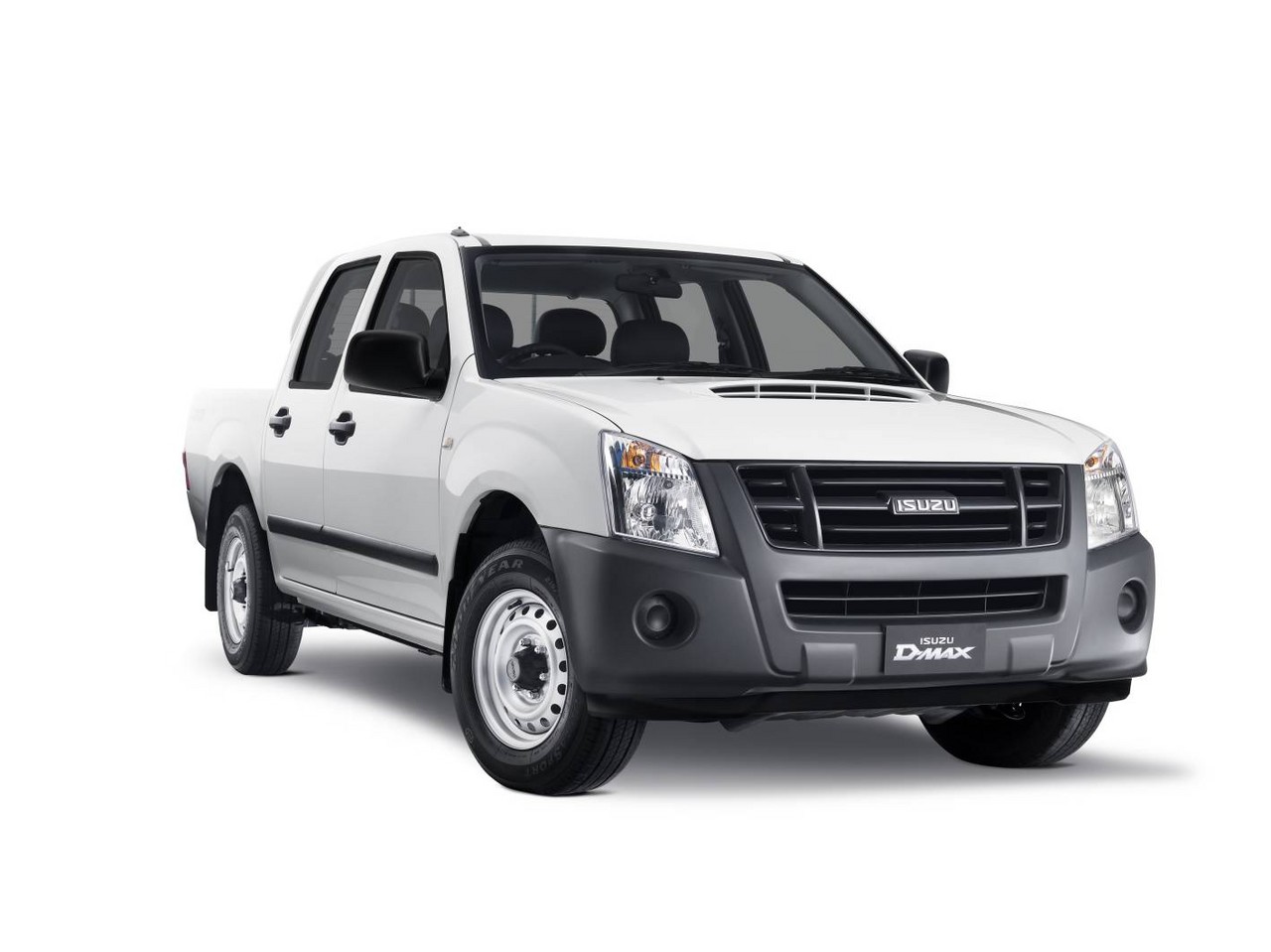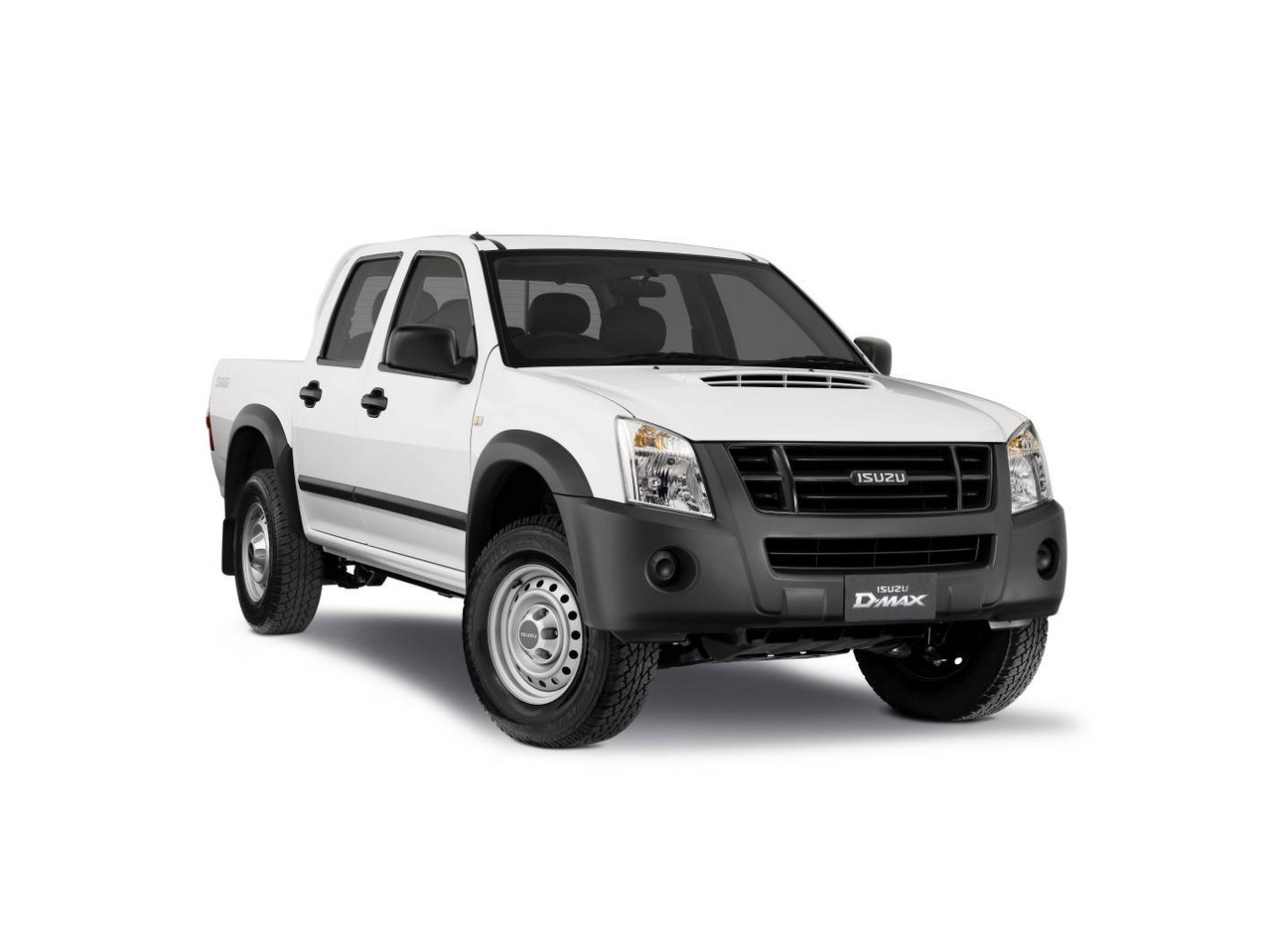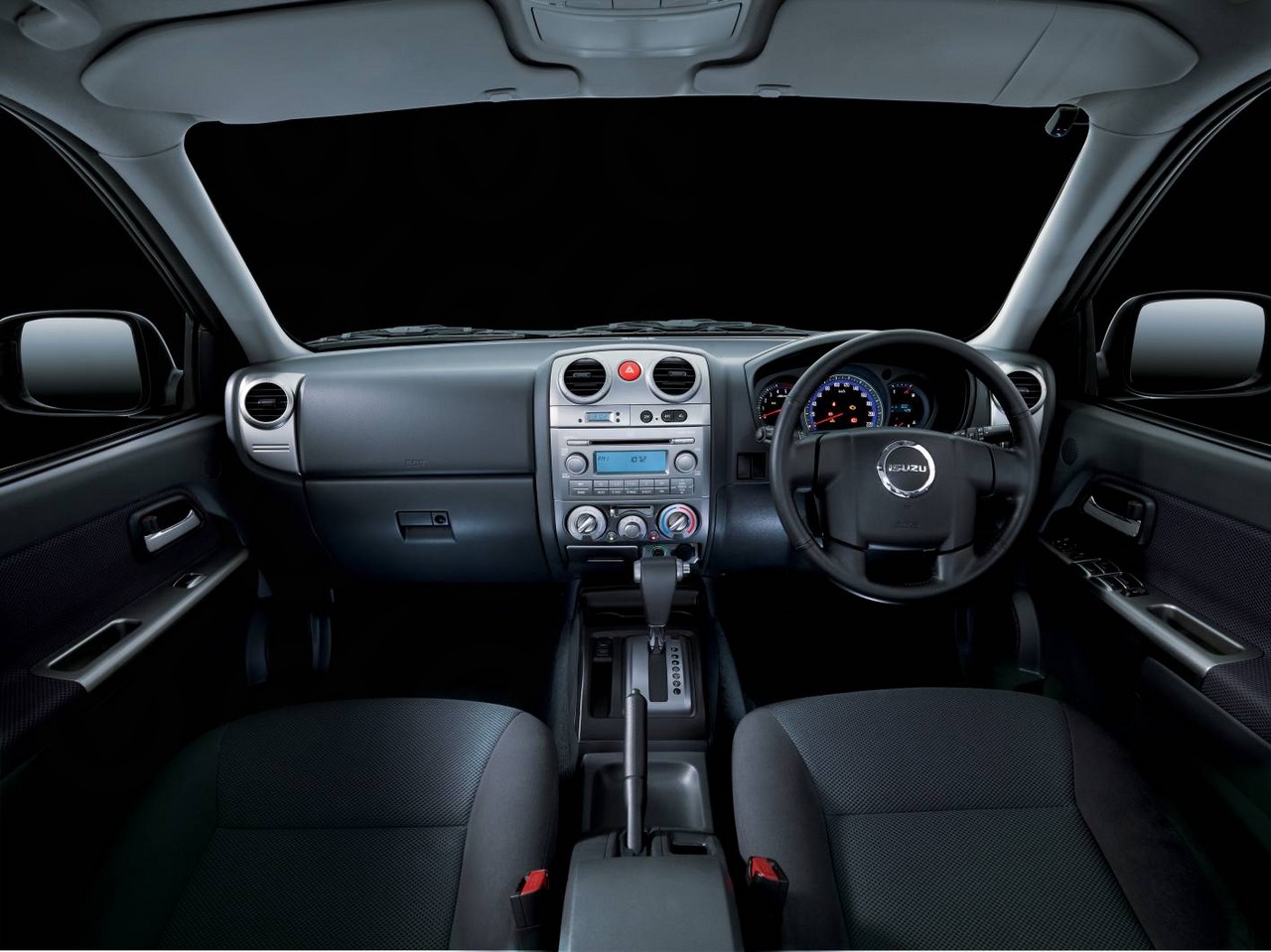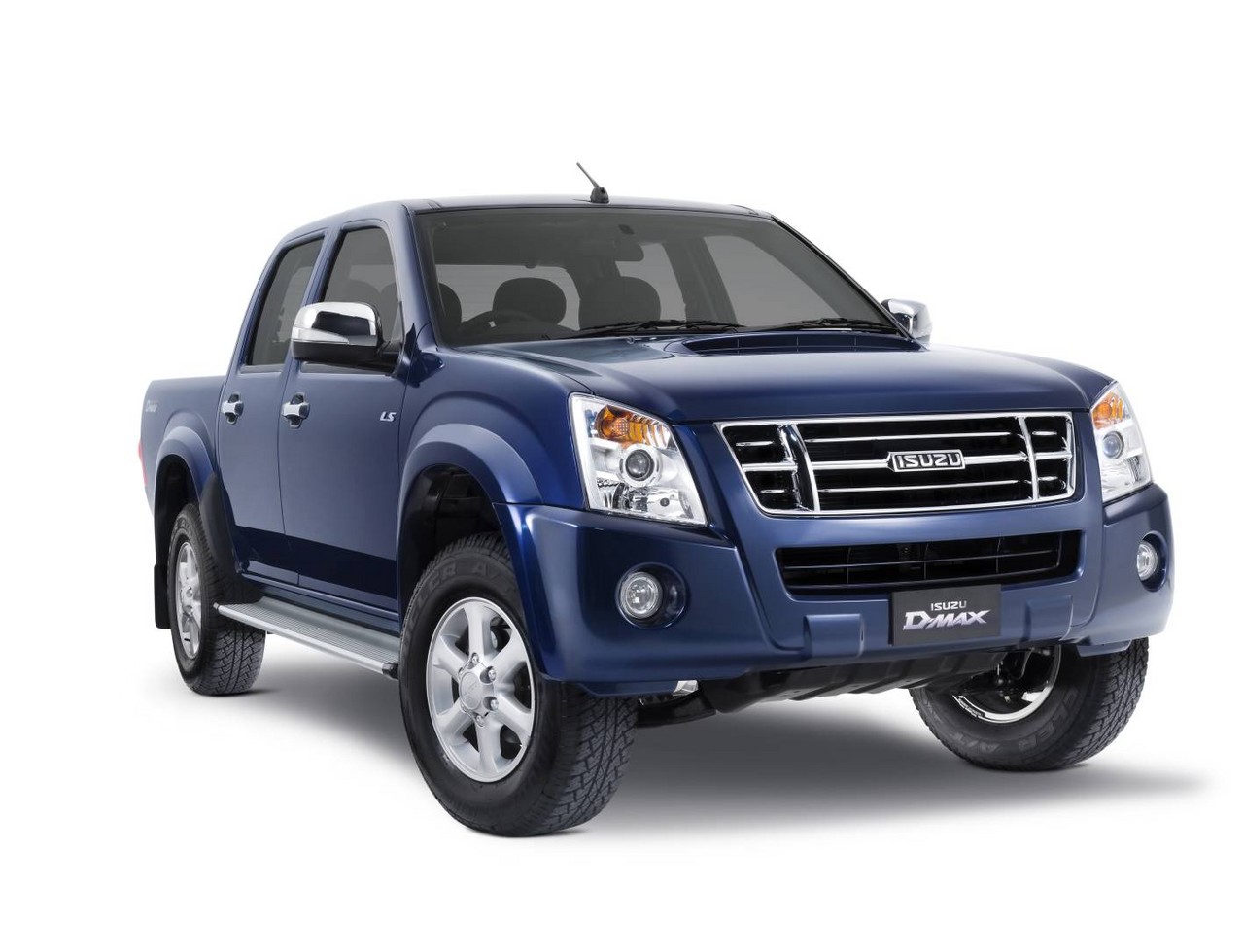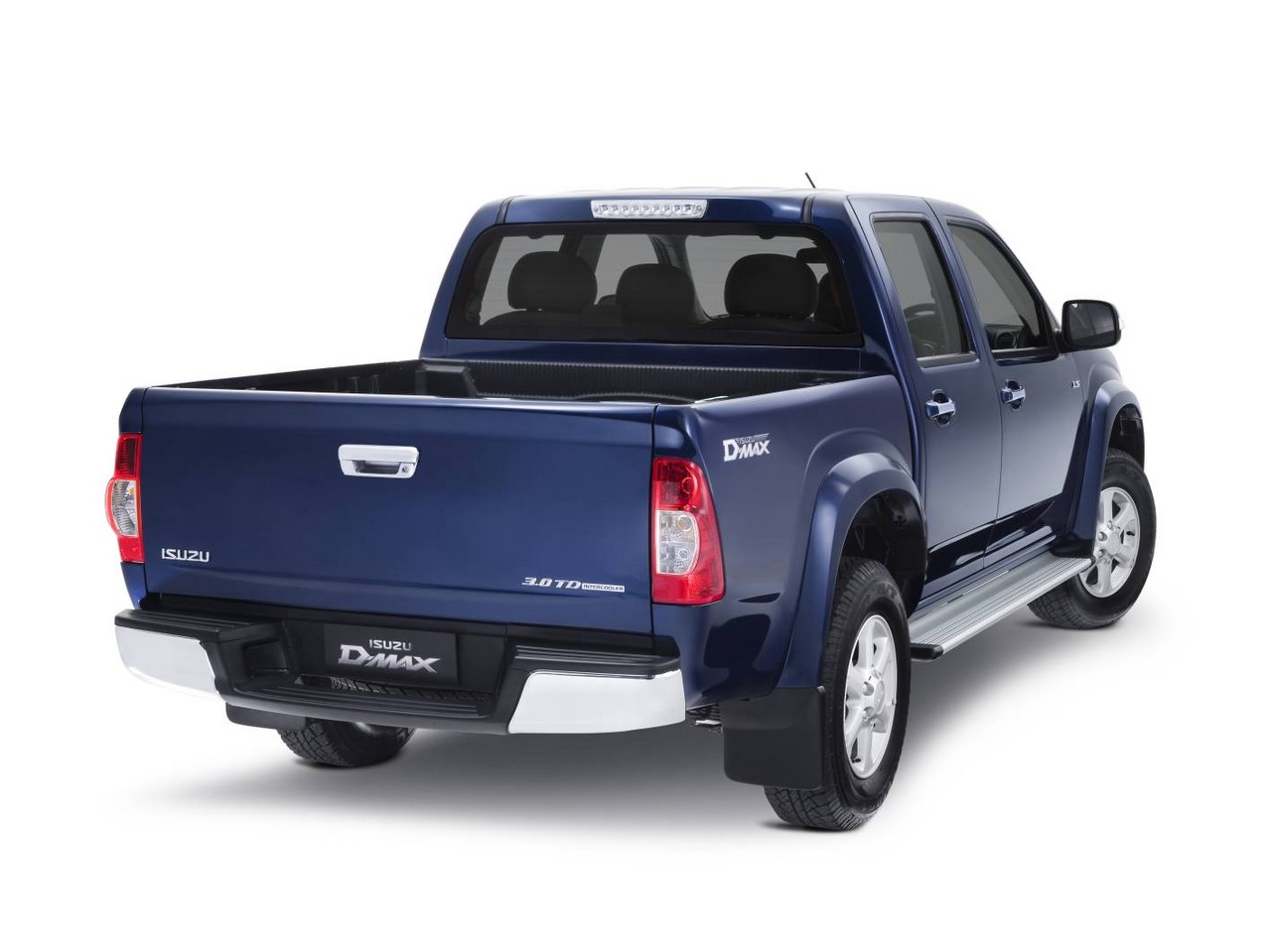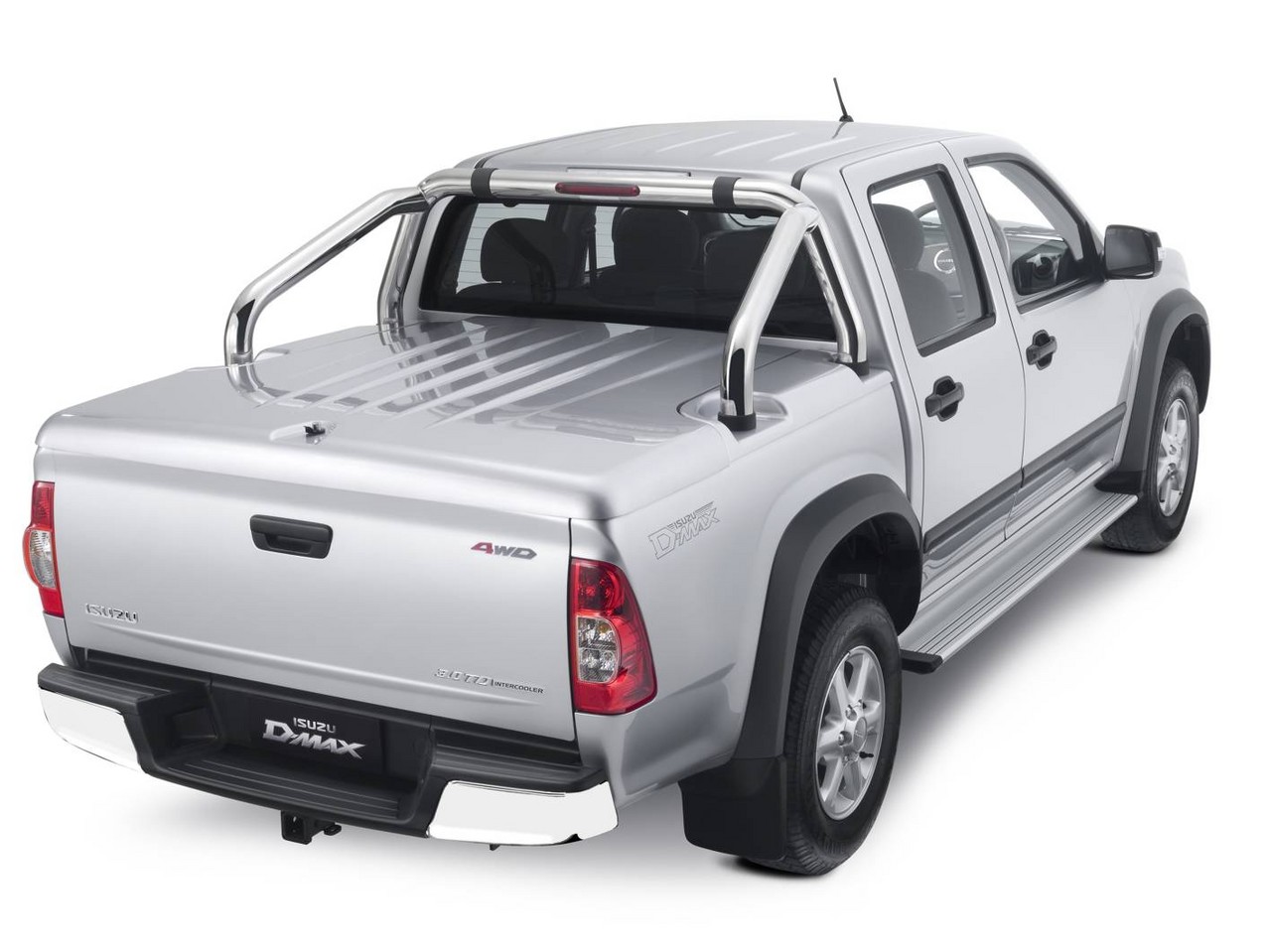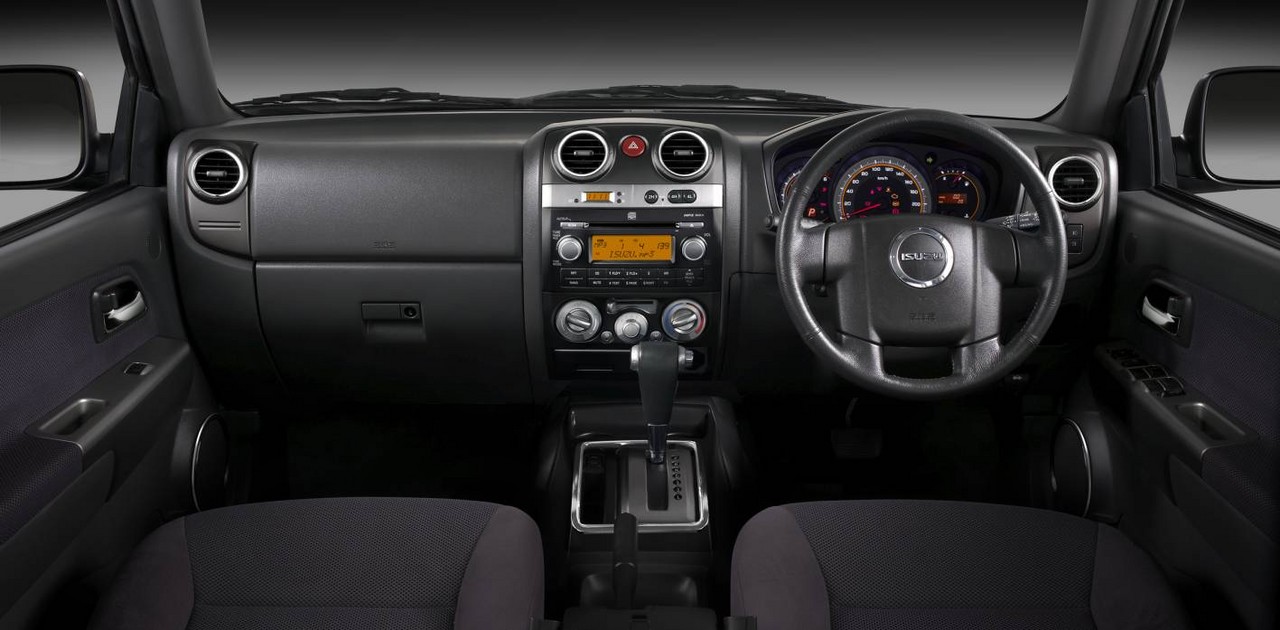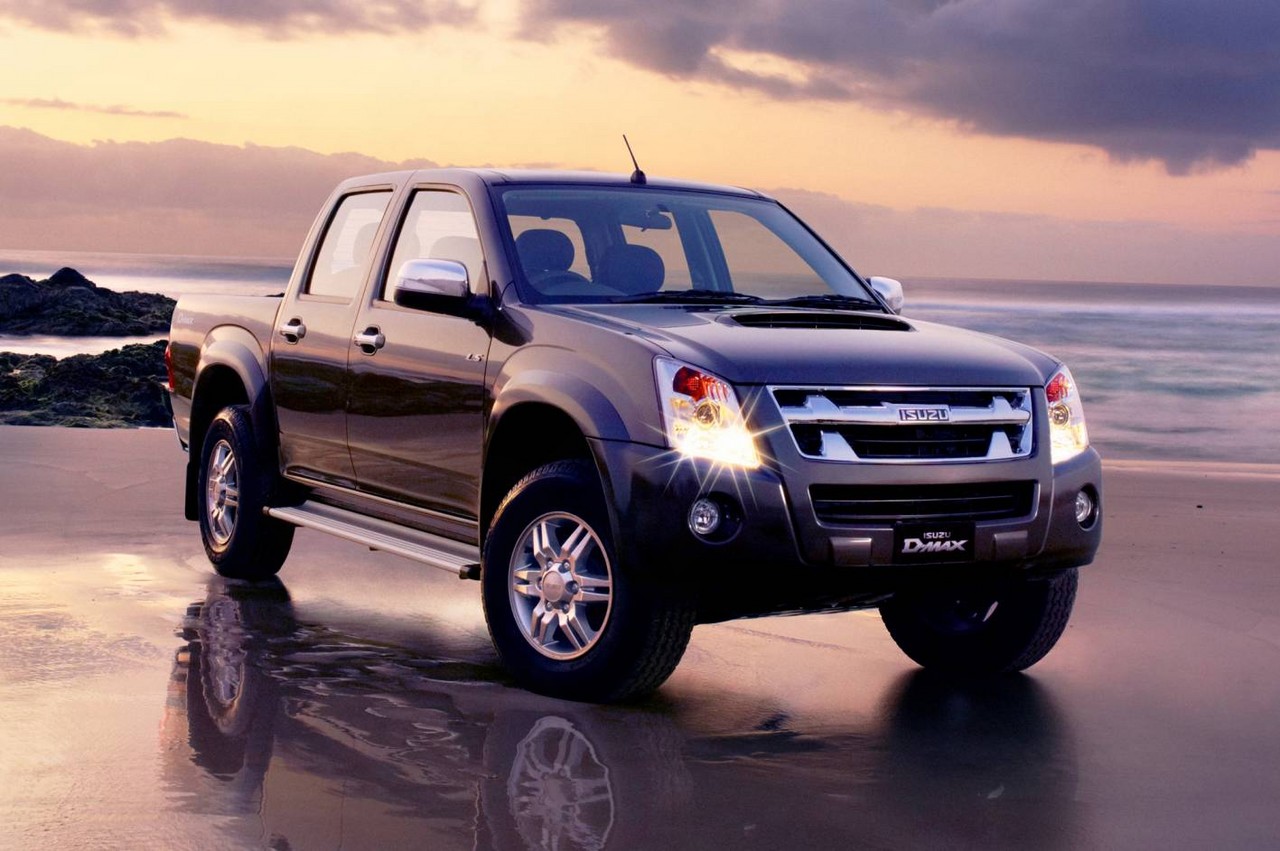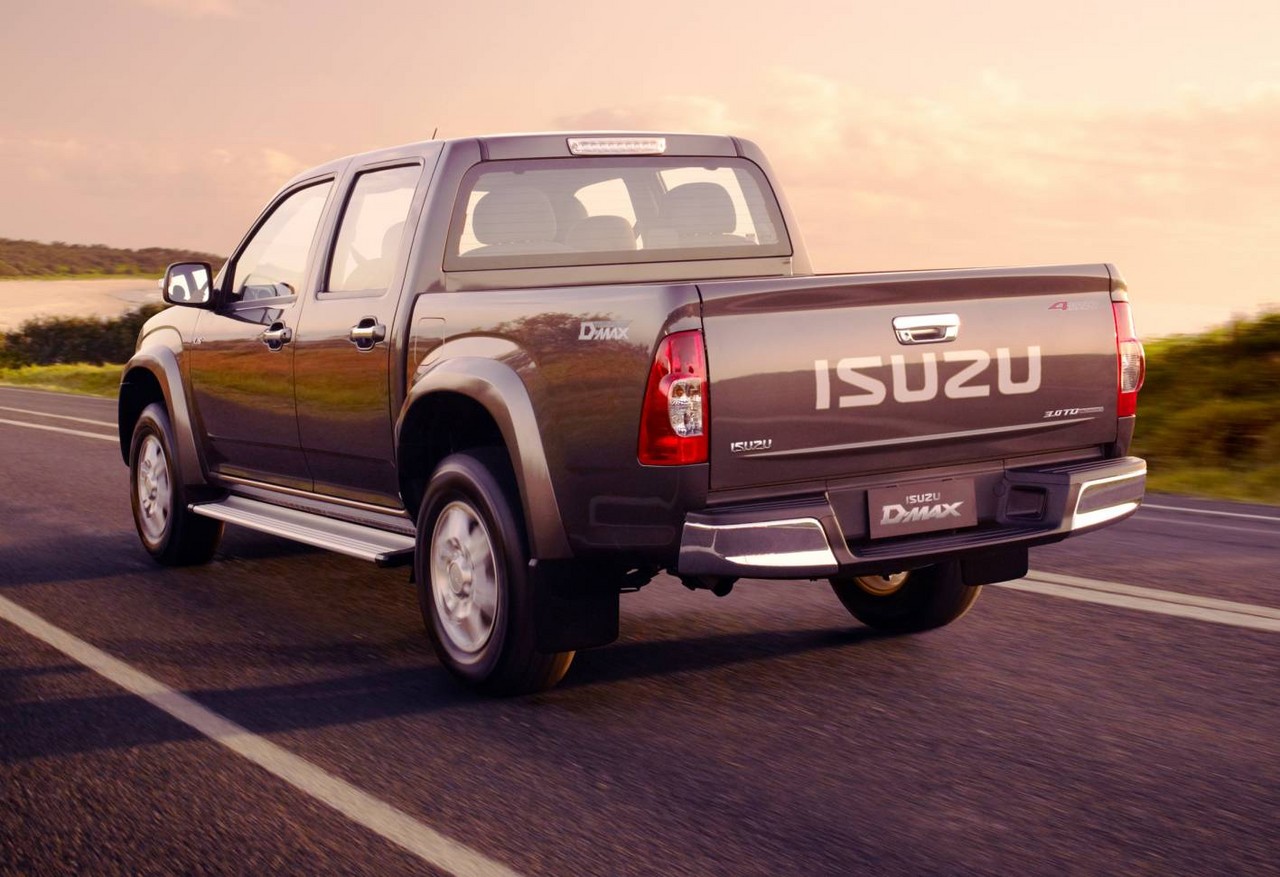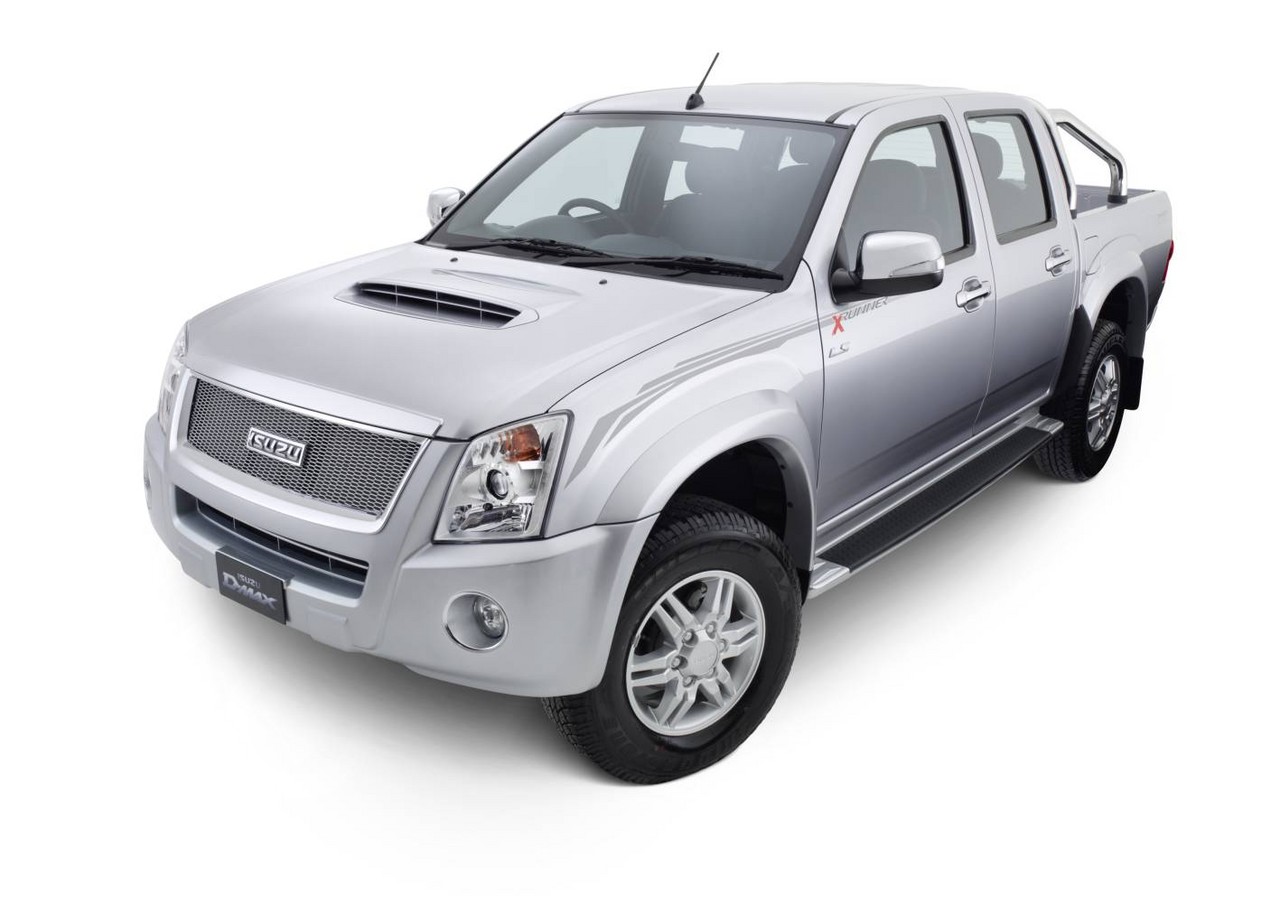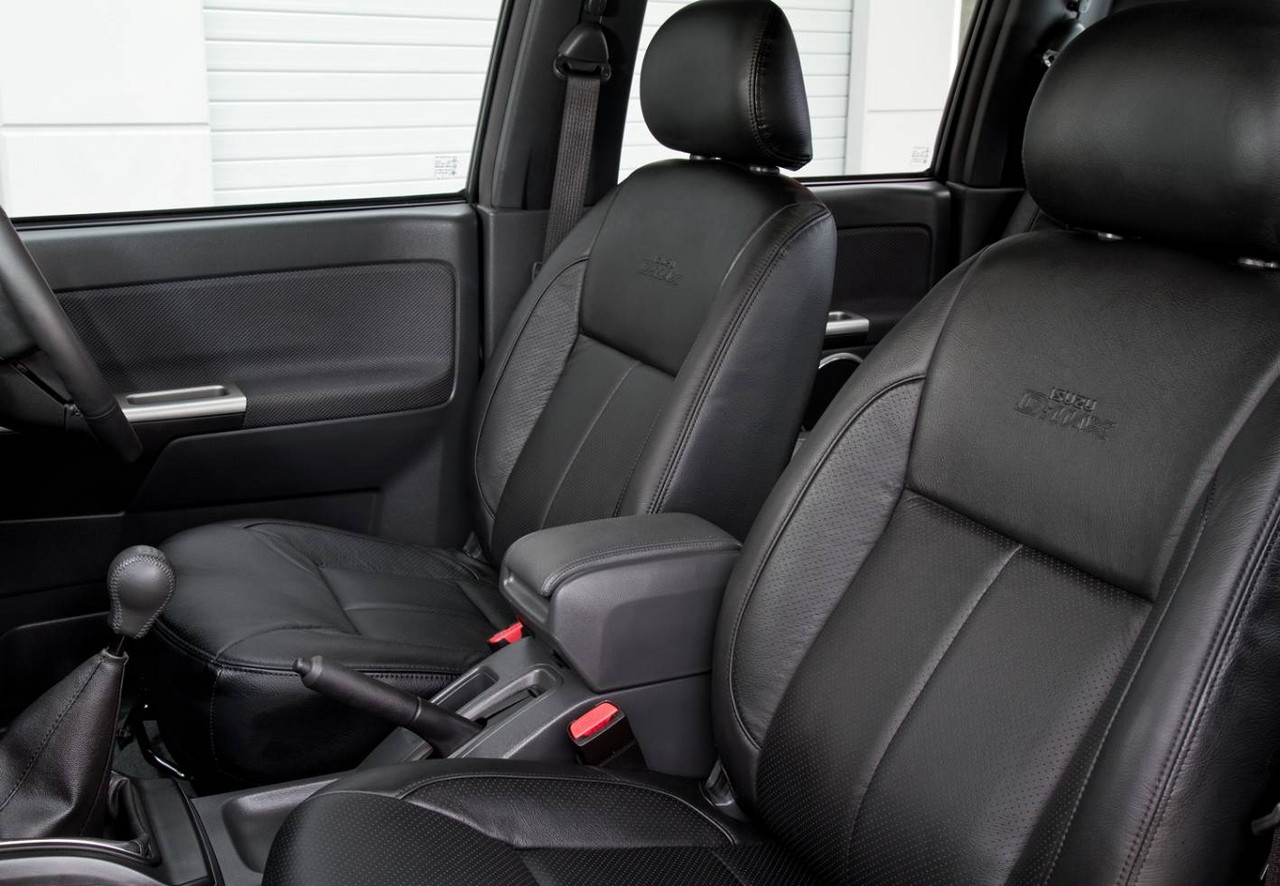
- Responsive 3.0-litre turbo-diesel engine
- Spacious cabin
- Seats lack support
- Manual transmission has vague shift action
- Competitors have quieter, better-insulated cabins
- Cheap interior plastics
Overview
Released in October 2008, the Isuzu RA D-Max utility was solely available with a dual cab body and powered by a 3.0-litre turbo-diesel engine. Manufactured by Isuzu in Thailand, the D-Max was mechanically identical to the Holden RA Rodeo that Holden replaced with the similar Colorado in 2008. The D-Max utility range, however, consisted of an entry-level SX, LS, LS-M and LS-U variants. The full range is given in the table below.
The RA D-Max utility had a ladder-type chassis and all models had torsion bar front suspension and leaf springs at the rear. The four-wheel drive system utilised an electronically-controlled transfer case which could be engaged ‘on the fly’ via a dashboard button, which also provided selection of high and low range gearing. A limited slip differential was standard on all four-wheel drive and rear-wheel drive models.
Of the rear-wheel drive, models, LS variants had higher riding suspension from launch. In May 2010, however, the range underwent a minor update as the LS and LS-U variants were fitted with new double-spoke alloy wheels and a chrome grille with a single horizontal bar. Furthermore, an automatic transmission was introduced for the SX variant and the rear-wheel drive SX was also fitted with higher-riding suspension.
| Variant | Drive | Engine | Trans. | Peak power | Peak torque |
|---|---|---|---|---|---|
| SX | RWD, 4WD |
3.0-litre turbo-diesel I4 | 5sp man. | 120 kW at 3600 rpm | 360 Nm at 1800-2800 rpm |
| 4sp auto (2010-12) |
120 kW at 3600 rpm | 333 Nm at 1600-3200 rpm | |||
| LS | RWD | 3.0-litre turbo-diesel I4 | 4sp auto | 120 kW at 3600 rpm | 333 Nm at 1600-3200 rpm |
| 5sp man. | 120 kW at 3600 rpm | 360 Nm at 1800-2800 rpm | |||
| LS-M, LS-U |
4WD | 3.0-litre turbo-diesel I4 | 4sp auto | 120 kW at 3600 rpm | 333 Nm at 1600-3200 rpm |
| 5sp man. | 120 kW at 3600 rpm | 360 Nm at 1800-2800 rpm |
Safety equipment
Standard safety equipment included dual front airbags, ABS, electronic brake force distribution and anti-submarining front seats.
ANCAP crash testing
Results from crash tests conduced by ANCAP of the Holden RA Rodeo were applied to the Isuzu RA D-Max since they were essentially the same vehicle. In ANCAP crash testing, a 2004 Holden RA Rodeo LX rear-wheel drive single cab model – equipped with dual front airbags – received a three star adult occupant protection rating with a score of 23.51 out of 37. In the offset crash test, the Rodeo achieved a score of 7.51 out of 16, with poor protection from serious chest injury. As a result, a three-star rating was the maximum the Rodeo could achieve and a default score of 16 out of 16 was awarded in the side impact crash test.
Subsequently, a 2006 Holden RA Rodeo four-wheel drive crew cab – equipped with dual front airbags – received a three star adult occupant protection rating with a score of 21.4 out of 37. In the offset crash test, the Rodeo received a score of 5.4 out of 16, providing poor protection from serious chest injury. As before, a default score of 16 out of 16 was awarded in the side impact crash test.
Features
Standard features for the D-Max SX included a four speaker sound system with CD player and MP3/WMA-compatibility, air conditioning, flat folding rear seats, remote central locking, power windows, tilt adjustable steering wheel, 12 volt power outlet and immobiliser.
The D-Max LS was further equipped with 16-inch alloy wheels with high-riding suspension, a six speaker sound system, cruise control, projector headlights, front fog lights, leather-wrapped steering wheel and gearshift knob, power folding mirrors, trip computer and rear step bumper.
The LS-U was similarly equipped to the LS variant, but fitted with four-wheel drive. The LS-M, however, was intended for off-road use as it was fitted with a scratch-resistant grey front bumper, grille surround and wheel arch flares and vinyl floor covering.
2009 D-Max Arctic Pearl edition
In October 2009, the LS and LS-U variants were offered in limited-run Arctic Pearl editions. Compared to the standard variants, the Arctic Pearl editions featured Bluetooth mobile phone connectivity, unique carpet mats, a lockable hard tonneau cover and a custom-cut rubber floor mat for the tub. Visually, the Arctic Pearl editions could be identified by their pearlescent white metallic paint finish, chrome sports bar with integrated LED brake light, ‘Limited Edition’ badging and chrome detailing on the bonnet, lower grille and fog light recesses.
2010 D-Max LE II
In October 2010, a limited-run ‘LE II’ variant was released. Based on the LS-U variant, the LE II featured a six speaker Kenwood sound system with an integrated touch screen, Garmin satellite navigation system, reversing camera, USB/iPod/iPhone and Bluetooth connectivity and a lockable hard tonneau cover,. Furthermore, approximately half of the LE IIs were fitted with extra-cost silver-stitched Charcoal Italian leather seat trim. Visually, the LE II could be identified by its side steps with polished aluminium inserts and rubber grips, chrome nudge and sports bars, bonnet protector, fog light recess bezels and tail-light guards. The LE II was available in either Lunar White or Solar Bronze paint finishes.
2011 D-Max X-Runner
In April 2011, X-Runner editions of the LS and LS-U variants were released. Compared to the standard variants, the X-Runner editions featured black leather seats with ‘ventilation perforations’ and Bluetooth connectivity. Visually, the X-Runner editions could be identified by their chrome grille and sports bar (with integrated high-mount brake light), slim-line side steps, fog light bezels, bonnet protector and ‘X-Runner’ stripes on the front guard panels.
2011 D-Max LE III
In September 2011, a limited-run LE III variant was released. The LE III was also based on the LS-U variant and featured a six speaker Kenwood sound system with an integrated touch screen, Garmin satellite navigation system, reversing camera, USB/iPod/iPhone and Bluetooth connectivity, perforated leather seats and embroidered carpet mats.
Visually, the LE III could be identified by its unique 16-inch alloy wheels, bonnet stripes, unique grille with chrome bonnet protector, fog light bezels, sports side steps, chrome sports bar with a high-mount brake light, chrome tail-light lens guards, a front bumper over-rider and tub liner. The LE III was available in either black mica or pearl white paint finishes.
Related links
